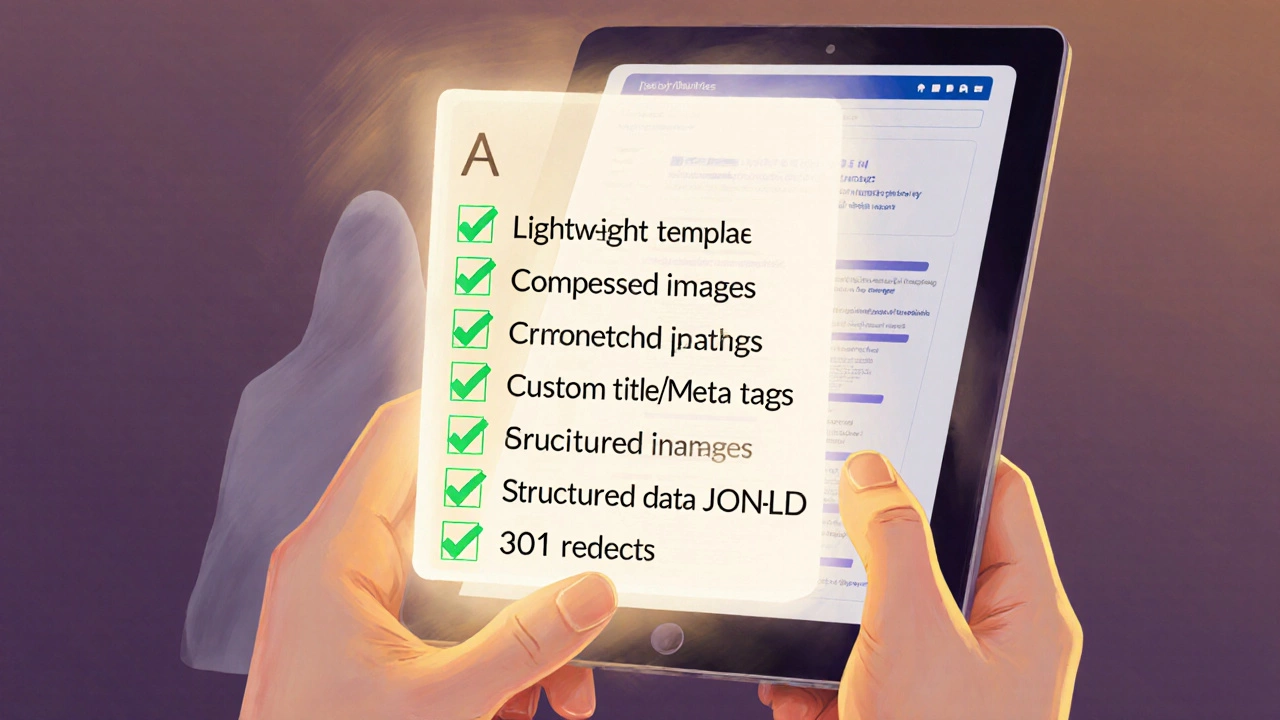Website Builder SEO Score Calculator
How SEO-Friendly Is Your Builder?
Answer a few questions to get your personalized SEO score and recommendations based on the latest SEO best practices.
When you pick a website builder, you’re not just choosing a design tool-you’re shaping how search engines see your site. Does the convenience of drag‑and‑drop come at the cost of rankings? Below we break down the real SEO implications, compare the biggest platforms, and give you a checklist to keep your site search‑friendly.
What Exactly Is a Website Builder?
Website Builder is a hosted software platform that lets users create web pages without writing code, often using visual editors, templates, and built‑in hosting. Popular options include Wix, Squarespace, Shopify, and Webflow. They bundle design, hosting, and basic SEO tools into one package, promising fast launches and low maintenance.
How Search Engines Evaluate Sites Built with Builders
SEO (Search Engine Optimization) is the practice of improving a website’s visibility in organic search results. Google’s crawlers look for clean HTML, fast load times, mobile‑friendly layouts, structured data, and a clear site hierarchy. Anything that obstructs crawling or slows page rendering can hurt rankings, regardless of the platform used.
Key SEO Factors Affected by Builders
- Site speed is a confirmed ranking signal; builder‑generated code can be heavier than hand‑coded pages.
- Mobile responsiveness is mandatory after Google’s mobile‑first index.
- URL structure matters for crawlability; some builders force long, query‑filled URLs.
- Schema markup helps search engines understand content; not all builders expose easy schema options.
- Internal linking influences PageRank flow; drag‑and‑drop menus can create shallow hierarchies.
Comparison of the Most Popular Builders
| Feature | Wix | Squarespace | Shopify | Webflow |
|---|---|---|---|---|
| Automatic image optimization | Yes (basic) | Yes (advanced) | Yes (built‑in) | Yes (via settings) |
| Customizable URL slugs | Limited | Full control | Full control | Full control |
| Schema implementation | Template‑based only | Basic (Article, Product) | Built‑in product schema | Full JSON‑LD support |
| Core code bloat (KB) | ≈250 KB | ≈180 KB | ≈200 KB | ≈120 KB |
| Mobile‑first templates | Yes | Yes | Yes | Yes |
Common Pitfalls and How to Avoid Them
- Heavy page Bloat: Builders often load unnecessary JavaScript libraries. Use the platform’s performance settings to disable unused widgets and compress assets.
- Duplicate meta tags: Some templates auto‑populate title and description fields. Manually review each page in the SEO panel to ensure uniqueness.
- Non‑semantic HTML: Drag‑and‑drop sections may wrap content in generic
divtags. Where possible, replace them with proper headings (h1‑h6) andsectionelements. - Limited control over robots.txt: Certain builders lock down robots directives. If you need fine‑grained crawling rules, choose a builder that lets you edit the file or host a custom
.htaccess. - Hard‑coded navigation depth: Shallow menus can dilute internal link equity. Create breadcrumb trails or secondary menus to deepen the site structure.
Best Practices for SEO‑Friendly Builder Sites
- Start with a lightweight template; strip out animation or background video unless essential.
- Compress images before upload; use WebP where supported.
- Manually edit title tags and meta descriptions for every page.
- Implement structured data via the builder’s built‑in JSON‑LD editor or a third‑party plugin.
- Set up 301 redirects for any URL changes to preserve link equity.
- Use the builder’s SEO audit tool (if available) to catch missing alt attributes, broken links, and slow pages.
- Consider a custom domain rather than the default sub‑domain (e.g.,
yourname.wixsite.com). - Regularly test page speed with Google PageSpeed Insights; aim for a > 90 score on mobile.

When to Choose a Builder vs. Custom Development
If you need a quick launch, limited budget, and don’t expect heavy traffic, a builder can be a solid start. However, for large e‑commerce sites, multilingual projects, or highly competitive niches, the flexibility of custom code often outweighs the convenience of a builder.
Quick SEO Checklist for Builder Websites
- ✅ Use a clean, lightweight template.
- ✅ Optimize all images (compression, dimensions, alt text).
- ✅ Write unique title tags and meta descriptions.
- ✅ Verify mobile‑first design works on real devices.
- ✅ Add structured data for articles, products, or events.
- ✅ Ensure URLs are short, keyword‑rich, and use hyphens.
- ✅ Set up 301 redirects for any changed URLs.
- ✅ Submit an updated XML sitemap to Google Search Console.
- ✅ Monitor page speed monthly and fix any regressions.
Frequently Asked Questions
Do website builders generate SEO‑unfriendly code?
Most builders produce functional HTML, but they often include extra CSS/JS that can slow pages. By pruning unused modules and choosing a lightweight template, you can keep the code search‑engine friendly.
Can I add custom meta tags in Wix or Squarespace?
Yes. Both platforms have an SEO panel where you can edit title, description, and even inject custom meta tags via their developer mode or header code injection feature.
Is site speed more important than design flexibility?
Speed directly influences rankings and user experience. If a design choice adds heavy scripts, weigh the SEO cost against the visual gain. Often a simpler design wins both users and crawlers.
How does structured data work on a builder site?
Many builders let you paste JSON‑LD snippets into the page header or use built‑in schema blocks for articles, products, and events. Adding accurate schema can improve click‑through rates by enabling rich results.
Should I switch from a builder to custom code once my site grows?
If you start hitting performance limits, need complex integrations, or want full control over SEO elements, migrating to a custom CMS or framework can future‑proof your site. Plan the move carefully to preserve existing URL equity.





